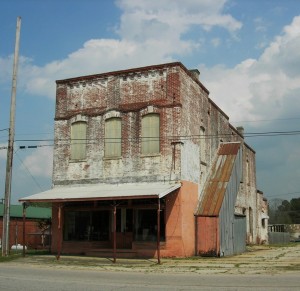 The day the members of many of the staunch older country clubs around the country have been putting off and dreading for years is finally here…The Forced Rebuild of their Clubhouse.
The day the members of many of the staunch older country clubs around the country have been putting off and dreading for years is finally here…The Forced Rebuild of their Clubhouse.
Years ago when country clubs went about initiating the start-up of their membership and building their state of the art facilities little thought was given on what to do when the clubhouse became old and out of date. Not much thought was given to what was to be done when the plumbing stopped working, the wiring starts to fray, the air conditioning system becomes outdated, the building doesn’t meet current city building/safety code, the roof leaks, the place starts smelling like Wal-Mart on Saturday afternoon and the old members start to die off.
Oh, well, the ‘old members dying off’ part was thought of but only in that it was a fact and was usually mentioned by the club’s governing board (or owners) when the issues of spending money to rebuild the club’s entire infrastructure were brought up. Their standard remark to defending off doing anything that cost money was to say…
“Oh, I’ll be dead when that happens so I’ll let the next generation deal with paying for that. Let’s just make sure the bar in the men’s locker room is fully stocked and the scrambled eggs on the breakfast buffet are not runny.”
The Day is Here
Well, that day when the governing board and owners of Old Country Clubs starts dying off is here for many private country clubs around the country and it could not come at a worse time. Many country clubs built in the 50’s and 60’s are now starting to show their wear and to survive they need to update to appeal to the new, younger country club membership.
It just goes to show, that not everything can last a lifetime. When many of the country clubs around the country organized and built their clubhouses did so with the mindset of the clubhouse lasting forever…or forever in the sense of the people saying it means it would be forever for them and their lifetime.
True, some of the more ancient country clubs were built to last the test of time…however, today country clubs around the country are having to deal with what to do about dilapidated clubhouses and other building on their property past overdue needing to be completely redone, bulldozed and completely rebuilt from the ground up.
Yes! To do that takes money. Lots and lots of money. And today, getting that money is near possible.
So what does a semi-private or private country club do?
Sitting tight would be the wise thing to do, but if the infrastructure of a country club is costing more a month to repair than the monthly interest on a capital improvement loan then maybe sitting tight is not the right answer.
Increasing revenue is the optimum option which would usually mean raising membership fees or bring in new members. The thinking that these two options are the only way to raise revenue is where most governing boards and owners of country clubs begin to limit themselves.
New Young Country Club Membership
One of the directions an old country club can take to develop the funds needed for a complete new clubhouse is to bring in New Members. The prime market or demographic to target is the 25 to 35 yr olds. The over 50 yr olds and the current members are not going to wait around that long for a new facility whereas the younger generation has a few more years to enjoy a long-term construction program.
However, to get the younger generation interested in becoming a member of an aging country club the club’s governing body Has To Come Up With the fund for a new fresh designed clubhouse friendly to today’s business’ needs and very, very family oriented. Without a newly updated clubhouse, the New Young Members are not just going to want to “sit tight”. They are going to join a club that is not willing to set aside the funds needed to build the clubhouse while marketing to younger members.
Increase Initiation and monthly dues
As a last resort, old country clubs could raise the initiation fees for new members and raise monthly dues for current members. This decision comes with a real high-risk factor. Any increase of monthly dues are going to force the older members to leave the club due to 1. not seeing the value of spending more funds a month for something that does not fit their needs, and 2. the increase will place the membership dues out of reach for even the most financially
- not seeing the value of spending more funds a month for something that does not fit their needs, and 2. the increase will place the membership dues out of reach for even the most financially
- the increase will place the membership dues out of reach for even the most financially well-heeled member.
Members leaving for any reason is a lost of current revenue for which any country club of any stature cannot afford.
Then secondly, the new member is not going to want to pony up any amount of money to become a member of a worn out country club. Especially if there are other choices in the same area.
How did Country Club Facilities get this way?
Country Club Clubhouses do not last forever. Even the clubs that are hundreds of years old deal with aging infrastructure and generational attitudes towards new designs. Fortunately, many of the older more established country clubs’ forefathers thought ahead enough to construct their clubhouses out of materials that would last for hundreds of years.
During the 1950’s and 60’s when the economy was shooting up and the attitude of millions was to leave for today and enjoy life today, the thinking was…
Capture the market now and deal with other issues later.
So over time the quality standard of a clubhouse’s infrastructure became set for making something last 20 to 30 years since by then whoever owned the facility then will be in a position to rebuild something better.
Consequences
So, what if a country club that has a golf course, or two, or three, does nothing to improve its facilities for the next generation?
Over time, the value of being a member of the club, haunted with the problems created from years of neglect, will go down. What will drive the value of a country club membership down further is the members not wanting to use the facility due to its dilapidating infrastructure (restrooms that don’t work, 20-year-old furniture and fixtures, cracked or buckled cart paths on the golf course…) or having a dated image.
One of the main activities a country club clubhouse was built for was to be used for the members’ business outings. Everything from Holiday parties to business conferences, the clubhouse offered the members a private and special place to go to project his or her successful business’ image. If the facility does not reflect the same high standards of a business’ operations or project the level of a professional image the member has for his business, then the value of being a member is greatly diminished.
Once the value goes down the members start to drop out. When the membership leaves the revenue drops and when revenue drops below the operation’s budget needs then priorities of what gets repaired are made and things start not getting fixed which perpetuates the continuing cycle of decreased value further.
Sell Off Begins
Once the revenue for a country club hits the bottom bad things will probably happen rather quickly. The governing board or owners of the country club will be faced with some tough decisions that will Have To be made. Sometimes, they may be forced into making them especially in the cases where city, state or federal dwelling and safety codes are not met.
They will either have to:
- Pay for the complete rebuild of the country club’s facilities out of their own pockets with hopes their next of kin will benefit from it since the return on that investment will be 20 years or more. This action would be the most respectful action a corporate owner could do for a membership that put up with the decay of the facilities for many years.
- Sell off some of the real estate the club owns to raise the capital needed for the reconstruction. If there is more than one golf course one may be sacrificed to finance the survival of the other course. This action would result in the owners receiving a huge black eye from the surrounding community who invested in the surrounding properties of the golf courses and will place the remaining members in a dark shadow once the word gets out they are a member of a club that sold off the property.
- Or, sell all the facility and walk away. This action would trigger yet another layer of economic concern in the community since the new owners could turn the facility into multi-resident dwelling driving the homeowners of the property around the golf course out. The once beautiful area will become nothing more than a bedroom community needing even more of the city’s budget to maintain.
These drastic steps are real and are happening right now around the country with even more munis, private country clubs and daily fee golf courses reconsidering their future.
Isn’t there another way?
Hopefully, somewhere somehow the owners of country clubs will look at enduring the now direr economic situation and look for other solutions to keeping golf going at their facilities instead of running away from the problem by taking the Sell Out route.
The large corporations that own multiple country clubs may have to do what other corporations today are going to have to do which is drastically cut executives’ salaries and reduce the dividend paid to investors. These are the two things that got them into the mess they are in and now will have to be dealt with quickly.
These large groups of investors and corporations that paid, in some cases, overvalued prices for the country clubs will now have to pony up clean cash taken from one of their many war chests to pay for complete updates to facilities they own. This will be the only way they can achieve a return that is based on a more realistic ROI term based not on minutes but years or to improve the value of the facility to attract buyers.
The privately owned country clubs that are surviving on a limited membership are going to have to find creative financing. Infrastructure updates could be paid partly from the membership thru small assessments fees to the membership over a period of years instead of all at once, however, other options could be realized if they opened their doors to outsiders a little more.
Semi-Private and daily fee facilities are going to have to look at alternative revenue sources outside of green fees and F&B. They will have to look for people who can offer greater thinking than offering Hamburgers at the turn included in the green fees.
BOTTOMLINE:
Every golf facility is going to be faced with revenue challenges to survive. Those facing the need to update their facilities are going to find it hard to survive and will have to make some hard decision. However, there are other solutions to many of these golf facilities’ issues. The answers will come from reaching outside the boardroom walls to bring in business people who have dealt with these decisions before.
For all us golfers and members of country clubs everywhere, we can only hope they will make the right decision…and soon.
Let me know how I can help.




